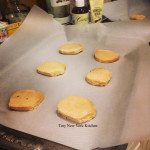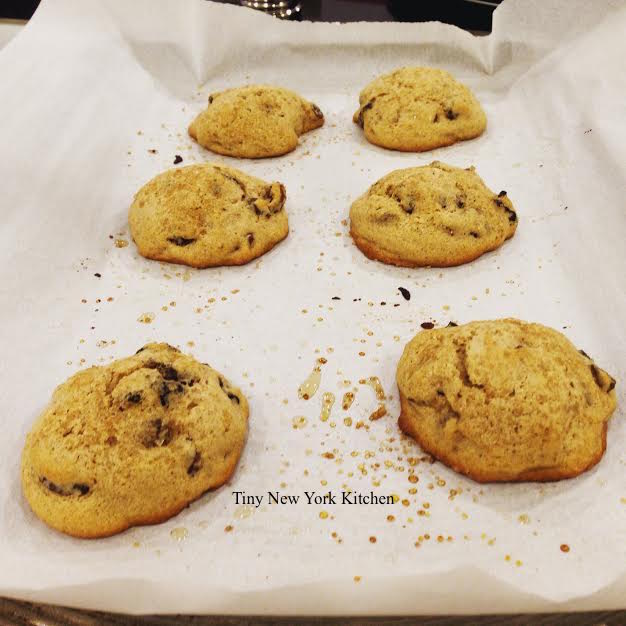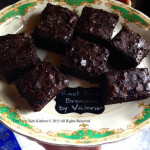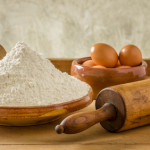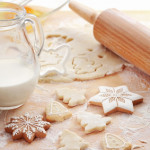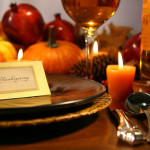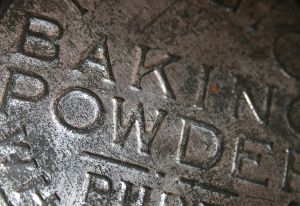We At Tiny New York Kitchen Wish You And Your Family A Very Healthy & Happy New Year!
Last Sunday Wilton, Connecticut’s, Cannon Grange, had their annual fair. I love this little fair because it truly is something from out of the past. The fair is held inside the grange where people compete against one another for things like “best homegrown tomatoes” and “best homemade pickles.” Outside are various local venders as well as a children’s’ watermelon eating contest. On a whim I decided to enter my Root Beer Brownies and won first prize. Next year I may enter my rhubarb jam or my double decker carrot cake. These are some of the simple things in life that make me happy.
If you have many occasions to use a rolling pin then you really should have different sizes and different shapes of rolling pins on hand. Sometimes a very long, thick, and heavy one will be best. For other dough you will want a smaller, lighter one. The French style, which is extra long, narrow, and tapered at both ends, is especially good for rolling dough into a round shape, as for a pie crust, while the straight-sided rolling pin is better for an oblong shape.
If you’re unfortunate enough to be without any rolling pin at all, other things will do a decent job. Try a straight-sided bottle, tall jar, or a drinking glass.
"Work With What You Got!"
© Victoria Hart Glavin Tiny New York Kitchen
Thanksgiving is nearly here. If you’re hosting Thanksgiving dinner don’t panic. Here are some important tips that will help you get organized and ensure that your meal goes smoothly and tastes delicious. What’s important is enjoying being with family and friends.
- Plan your menu according to the number of guests you’ll have.
- Order your turkey! Just how big should your turkey be? It’s recommended to have at least 1 1/4 pounds per person. If you round up a bit from that number, you’ll be able to enjoy leftovers.
- Finish your food shopping, and pick up your turkey two days before Thanksgiving. I hope that you’re turkey is a fresh one at this point. How long does a frozen turkey take to defrost? You’ll need to allow ample time to defrost your turkey in the REFRIGERATOR. Turkeys less than 12 pounds will take as long as two days to defrost. A turkey more than 20 pounds can take up to five days to defrost.
- Prepping is important. Make pie crust and store in the refrigerator. Finish any baking (cornbread, muffins, pies). Peel and cut potatoes, and store in water in fridge. Make fresh cranberry sauce. Cut carrots, celery, onions, and mushrooms for stuffing. Sauté and store in fridge. Place white wine in fridge to get nice and chilled.
- The day before Thanksgiving prep green beans, Brussels sprouts, cauliflower, or any other vegetables, and store in a Ziploc bag in the fridge. Set the table and label serving dishes.
- Thanksgiving Day prepare stuffing and other side dishes. Prepare turkey for roasting and place in oven at determined time. If you choose to stuff the turkey, do it right before you put it in the oven. Take stuffing out of the turkey immediately after cooking. While turkey is roasting, make mashed potatoes.
- How do you know when your turkey is done? Use a meat thermometer inserted into the meatiest part of the turkey. Wait for the reading to reach at least 165 degrees. If you’ve stuffed the bird, make sure that also reaches the same temperature for food safety purposes.
- Those glorious leftovers! If you refrigerate the turkey within two hours of serving, your leftovers will last three to four days.
- Try to relax and wait for your guests to arrive.
- Have a wonderful Thanksgiving!
"Work With What You Got!"
Victoria Hart Glavin Tiny New York Kitchen
Homemade is alright with me. Homemade is the way it should be.
Baking powder is a leavening agent that reacts to liquid and heat and creates carbon dioxide gas, which expands the bubbles created by the creaming process, causing the cake to rise. Baking powder loses its effectiveness after six months to a year. Be sure to check the date on the can when you buy it or mark it yourself.


